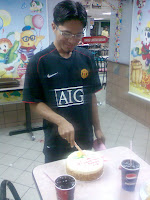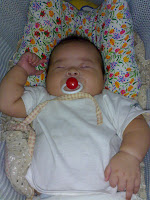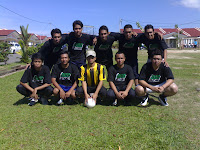start from beginning..............
tanggal 24th february 1989.....
jam 10.20pg.....
@Hospital Besar Kuala Lumpur.....
aku ditarik oleh seorg yg..... berpendidikan...
kedoktoran demi meyelamatkan aku... utk meneruskan kehidupan sebagai.... hamba-NYA....
beliau menepuk2 punggung ku utk.... memastikan aku hidup atau tidak.....
seminit kemudian....
tiba2 kedengaran suara seorg bayi.....
suara i2 adlah aku....
ayahanda & bonda ku berasa gembira setelah aku..... mengeluarkan suara.....
ketika i2 ke4-4 adik beradik ku sedang menunggu.....
kepulangan ku dirumah.....
utk memastikan aku menjadi muslimin yg berguna....
ayahanda ku telah melaungkan azan di telinga kananku.....
sungguh merdu suara ayahandaku melaungkan azan.....
sehingga aku terlena didakapan ayahanda ku...
setibanya aku dirumah.......
aku merasakan hidup ini penuh dengan dugaan.....
riuh rendah disekeliling aku.....
aku hanye mampu tersenyum ketika i2....
aku masih tidak mampu melihat ag....
aku masih tidak mengenali ahli keluarga ku lg.....
2 ari selepas aku dilahirkan.....
setelah mendapat kata sepakat dlm institusi keluarga....
aku diberi nama MUHAMMAD FIRDAUS yg menpunyai...... mksud sebuah SYURGA.......
berat nama ku i2 utk aku memikul sehingga ke akhir hayat....
dri ku ini sudah hampir sebln bernyawa didunia yg fana ini.......
aku sudah mula mengenali ahli keluarga ku......
aku mula berguraw senda bersama mereka.....
dan lama kelamaan mulut aku sudah boleh mengeluarkn.....
perkataan2 lazim bg seorg baby seperti aku.....
lg seronok la ahli keluargaku bermain dgn ku......
beberapa bln kemudian......
aku mengusahakan dri ini cuba membuat.......
satu perubah pd dri ini.....
aku bersyukur ke hadrat ilahi.....
kerana aku mempunyai keluarga yg sempurna.......
trima kasih ku ucapankn kpd ayahanda & bonda.....
abg long, abg ngah, kak lang, serta kak chik......
kerana mereka lah aku dpt menikmati kehidupan di dunia ini...
mereka lah yg mendidik & menjaga aku sehingga.......
aku menjadi dri aku.......
tanpa sokongan & dorongan mereka aku tidak mungkin......
aku menikmati kehidupan ini..........
aku sayang akan kamu sume........
insyaALLAh kalo tuhan pjgkn umur ku......
akan ku bantu kamu sume(familyku)..........

kini, aku sudah berusia 19tahun........
sudah 19tahun aku menjalani kehidupan dgn sokongan & dorongan.....
familyku serta rakan2 yg slalu mendampingi aku......
tanpa mereka sapa la dri ini......
alhamdulillah, syukur kepada-NYA......
kerana pjgkan umur ku.........
sehingga ke ari ini........
sehingga aku mengenal......
erti kehidupan sebenar......
wlaupun aku masih berusia......
19 tahun.......
aku akan meneruskan kehidupan ini......
dengan penuh kesabaran dan ketabahan.......
sehingga apa yg aku impikan tercapai.....
banyak jugak dugaan dan cabaran yg aku tempuh selama......
aku hidup di dunia ni 19 tahun lamanya.........
dari pengalaman la aku mengajar dri ku ini utk.....
membaiki hidup agar diberkati oleh pencipta dri ku yg MAHA BESAR..............
kehidupan ini di ibaratkan roda yg berpusing........














